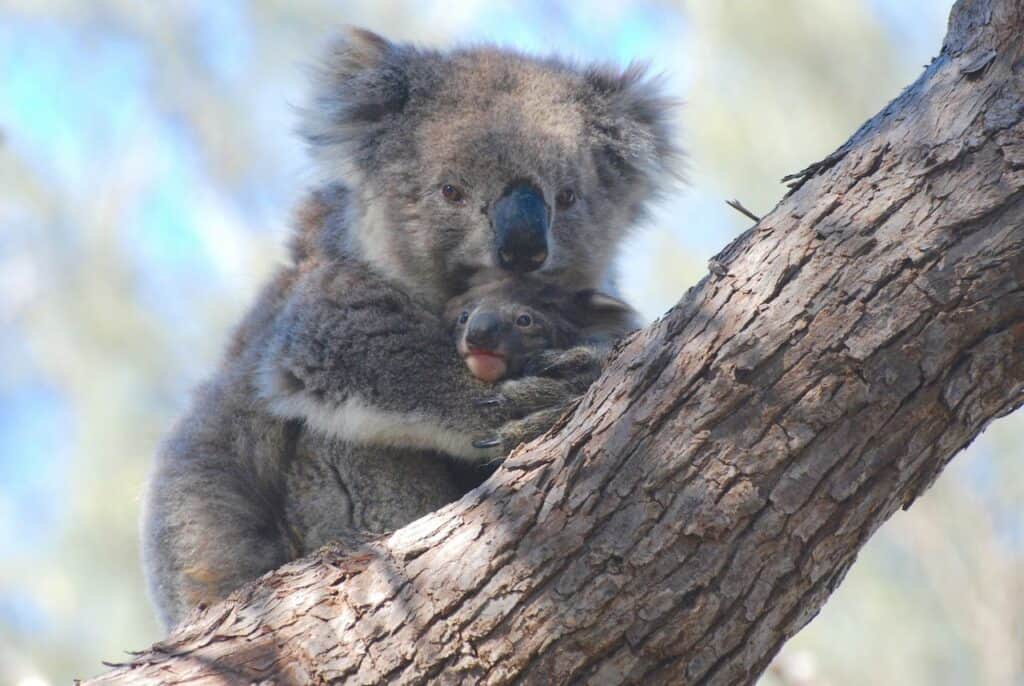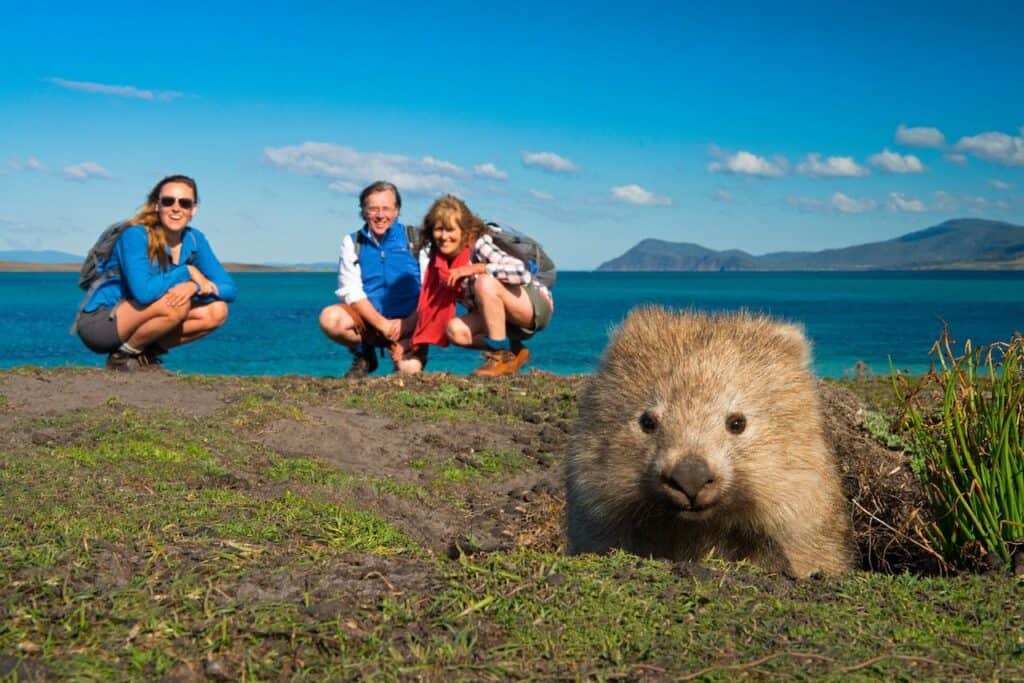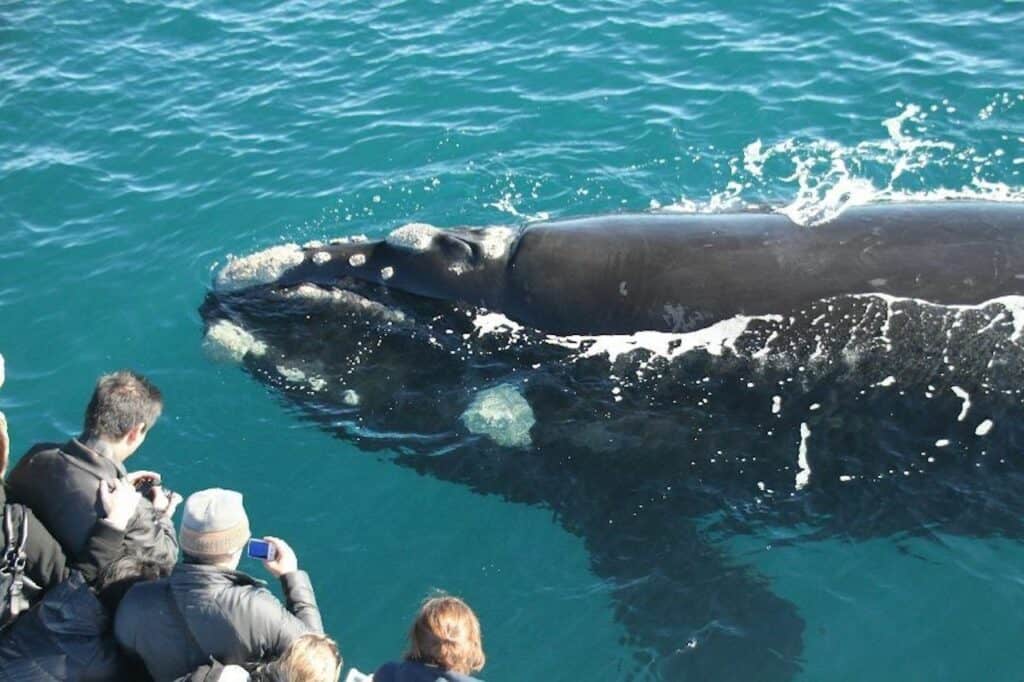Table of Contents
This post is brought to you in partnership with Australian Wildlife Journeys. But our opinions remain our own, and we will never compromise the integrity of our responsible travel mission.
In the 12 years since we launched Green Global Travel as one of the world’s first responsible travel blogs, we’ve been fortunate to have some incredible experiences in ecotourism destinations all around the world.
We’ve had countless wonderful wildlife encounters, from watching penguins and whales in Antarctica and being surrounded by polar bears in the Arctic to sensational safaris in the Amazon, Galapagos Islands, and Kenya.
But even after 12 years of travel blogging, there are still a lot of places left on our world travel bucket list. In terms of wildlife encounters, no destination ranks higher on that list than Australia, the only continent we’ve never visited.
I fell in love with wildlife conservation partly through watching Crocodile Hunter Steve Irwin in the ’90s, so seeing the countless array of animals in Australia has been a dream I’ve harbored for several decades now.
Sadly, the pandemic put that dream on hold. But we recently partnered with Australian Wildlife Journeys (a conservation-focused collective of small eco-tour operators) to help us assemble this list of responsible ways to see wildlife in Australia.
Read on for our in-depth guide to responsible Australian wildlife tours, from birdwatching in the Daintree Rainforest and safaris on the Murray River to incredible adventures on Kangaroo Island and Maria Island.

Places to See Wildlife in Australia
- Birdwatching in the Daintree Rainforest
- Christmas Island Bird & Nature Week
- Go on a Murray River Safari
- Explore the Wildlife of the Eyre Peninsula
- Hiking on Maria Island
- Look for Killer Whales in Bremer Canyon
- Swim with Whale Sharks in Ningaloo
- Take a Wildlife Journey in East Gippsland
- Whale Watching in Hervey Bay
- Visit Kangaroo Island

1. Birdwatching in the Daintree Rainforest
One of the oldest and biggest forests in the world (180 million years old, 463 square miles), the Daintree Rainforest is a UNESCO World Heritage Site located in North Queensland, Australia.
It’s bordered by another world-class UNESCO Site, the Great Barrier Reef Marine Park, and the 87-mile Daintree River runs through the lush forest.
So perhaps it’s no surprise that this fertile ecosystem is home to an incredible assortment of rare flora (even more than the Amazon Rainforest), not to mention an array of interesting animals native to Australia.
Guests on the 4-day Nature, Wildlife & Conservation Safari with FNQ Nature Tours have lots of birdwatching opportunities. There have been more than 450 species of Australian birds recorded in the area (more than half the continent’s total species).
They’ll also have a chance to participate in conservation projects protecting Australian wildlife such as the Spotted-tail Quoll, Tree Kangaroos, and some 18 different species of Australian raptors.

2. Christmas Island Bird & Nature Week
Located around 950 miles northwest of Australia in the Indian Ocean (220 miles south Java and Sumatra), the 52 square mile Christmas Island is a remote Australian territory that’s mostly protected as a National Park.
The island is a nature-lover’s paradise, with exceptional hiking trails and waterfalls, an abundance of flora and fauna, and excellent reefs for snorkeling and Scuba diving surrounding it.
In terms of native Australian animals, the island is home to an array of nesting seabirds, critically endangered Flying Foxes, and the Christmas Island Red Crab (which is famed for its late Fall migration to the sea).
The 8-day Christmas Island Bird & Nature Week tour with Indian Ocean Experiences is a great way to see these and many other animals of Australia, including birds such as the Christmas Island Goshawk, Red-footed and Brown Boobies, and the Christmas Frigatebird.
Guests will get a chance to see conservation scientists at work, with nightly presentations about the myriad projects they’re working on to improve the island’s ecology and protect endangered animals in Australia.

3. Go on a Murray River Safari
One of the longest rivers in the world, the Murray River stretch some 1,558 miles across southeastern Australia, where it forms the border between the states of New South Wales and Victoria.
Despite its immense size, the river carries a mere fraction of the water of similarly sized rivers in other parts of the world, with a widely variable flow. In fact, it has dried up completely at least 3 times during extreme droughts.
Fortunately, environmental NGOs such as the Murray River Trails Fund are working to support organizations at the forefront of improving the region’s biodiversity, floodplain health, and the status of endangered species in Australia.
Visitors to this fertile river ecosystem on their 3-day Murray River Safari can take guided hikes and outback drives to see Australian mammals such as Koalas and Western Grey Kangaroos, while learning about the river’s mythology among Aboriginal Australians.
Guests on the Murray River Trails tour can also take guided canoe trips and/or pontoon cruises to native Australian birds such as Royal Spoonbills, Black Swans, Darters, Kites, Parrots, and more.

4. Explore the Wildlife of the Eyre Peninsula
The Eyre Peninsula is located in South Australia, with the Spencer Gulf to the east and the open bay of the Great Australian Bight to the west.
Home to the Lincoln and Coffin Bay National Parks, the peninsula offers a visitors a chance to view countless animals of Australia, both on land and at sea.
Terrestrial wildlife you’re likely to spot on the Eyre Peninsula Wildlife & Ocean Encounters tour with Australian Coastal Safaris includes Emus, Kangaroos, Koalas, and the Rosenbergs Goanna, a monitor lizard that can grow up to 5 feet long.
There’s also an outstanding array of shorebirds, seabirds, and parrots.
You may also have a chance to swim in the wild with playful Australian Sea Lions and Bottlenose Dolphins, or– if you dare– observe Great White Sharks from the safety of an underwater cage!

5. Hiking on Maria Island
Located 2.5 miles off the east coast of Tasmania, the 44 square mile Maria Island (which is actually two islands) is part of the Maria Island National Park.
Before the Colonial era, it had been home to Aboriginal Australians for centuries. Maria Island was also used for several convict settlement during the first half of the 19th century,
Today this Australian island is a protected UNESCO World Heritage Site, with 2,300-foot mountains in the north and a 7.25 square mile marine reserve off the island’s northwest coast.
Taking a 4-day Maria Island Walk gives guests an opportunity to see threatened and endangered Australian animals such as Bennett’s Wallabies, Common Wombats, Forester Kangaroos, Tasmanian Pademelons, and Tasmanian Devils.
You may also have a chance to spot 125 different species of birds, including all of Tasmania’s endemic bird species, the vibrantly colorful Swift Parrot, and the lovely little Spotted Pardalote.

6. Look for Killer Whales in Bremer Canyon
The Bremer Canyon is a submarine feature of the Bremer Marine Park, which encompasses 1,727 square miles off the south coast of Western Australia.
Bremer Bay, which reaches depths of 19,400 feet, is one of the most popular whale-watching destinations in the world.
This is largely due to the fact that more than 100 Killer Whales (a.k.a. Orcas) return to the area each year, staying from January to April. Visitors have roughly a 95% chance of seeing them during this period.
Travelers who take the full-day Bremer Canyon Killer Whale Expedition with Naturaliste Charters may also get to see ocean animals such as Dolphins, Long-Finned Pilot Whales, Sperm Whales, 3 species of Sharks, New Zealand Fur Seals, Giant Squid, and the rare Beaked Whale.
Birdwatchers will also enjoy seeing pelagic species such as Flesh-footed Shearwater, Indian Yellow-nosed Albatross, and Wandering Albatross.

7. Swim with Whale Sharks in Ningaloo
Whale sharks are by far the world’s largest known fish species, measuring around 40 feet long and weighing upwards of 20,000 pounds.
But they’re truly gentle giants, usually seen swimming in slow, lazy circles to filter-feed on krill and plankton at the surface.
Swimming with whale sharks in Cancun, Mexico was arguably among the most incredible wildlife encounters we’ve ever experienced. It’s truly breathtaking, both literally (they swim faster than you’d think!) and metaphorically.
In Australia, the UNESCO World Heritage Site of Ningaloo Marine Park offers exceptional opportunities to swim with whale sharks responsibly via a full-day Deluxe Whaleshark Swim tour from Exmouth Dive & Whalesharks Ningaloo.
You may also have a chance to see Bottlenose Dolphins, Australian Humpback Dolphins, and Dugongs, with educational talks from marine conservation experts on the region’s biodiversity.

8. Take a Wildlife Journey in East Gippsland
If seeing Koalas and Kangaroos in Australia is on your travel bucket list, you may want to visit the 12,254-square-mile East Gippsland region of Victoria.
Located in southeastern Australia, East Gippsland offers a diverse array of relatively pristine ecosystems to explore, from lush forests and giant groves of eucalyptus trees to white sandy beaches and coastal heathlands.
The 4-day East Gippsland Wildlife Journey from Echidna Walkabout Nature Tours offers guests a chance to explore the area’s remarkable biodiversity, from Eastern Grey Kangaroos and Echidnas on Raymond Island to Koalas and Sugar Gliders in the forest and Lace Monitors resting by tranquil rivers.
Birdwatchers may also have a chance to spot unique Australian species such as Eastern Whipbirds, dazzling King Parrots, and elaborate tailed Superb Lyrebirds (which do a fantastic job of mimicking other birds).

9. Whale Watching in Hervey Bay
Located on the Fraser Coast of southern Queensland, the city of Hervey Bay is a hub for tours to another great place to watch wildlife in Australia, Fraser Island.
But it is best-known as the world’s first protected Whale Heritage Site, due to the annual Humpback Whale migration (which lasts from July to November).
The bay draws thousands of whales every year, and Humpbacks are renowned as an active, inquisitive species. So breaches, whale songs, and other forms of interaction are the norm rather than the exception here.
Hervey Bay is part of the Great Sandy Marine Park, so visitors on the Ultimate Hervey Bay Whale Watching tour with Pacific Whale Foundation Eco-Adventures Australia may also have a chance to see Dolphins, Dugongs, Sea Turtles, a broad variety of seabirds, and other marine life.
The eco-tour operator also offers guests an opportunity to learn about conservation from marine biologists, and to listen to whale songs by using underwater hydrophones!

10. Visit Kangaroo Island
The third largest island in Australia at 1,701 square miles, Kangaroo Island lies 8 miles off the continent’s southwest coast, near the city of Adelaide.
If you’re hoping to see Kangaroos and Koalas in Australia, this nature-lover’s paradise is another great place to visit. More than a third of its total land area is protected by nature reserves.
From seeing colonies of Penguins in Flinders Chase National Park to the “Dolphin Watch” conservation program, the 3-day Conservation Connection Kangaroo Island tour from Exceptional Kangaroo Island offers an immersive experience.
Guests will also have a chance to view weird Australian animals such as Short-beaked Echidnas (one of just 3 egg-laying mammals in the world), Goannas, Tiger Snakes, and more.
If you’re lucky, you’ll see the endemic Kangaroo Island Glossy Black-Cockatoo, whose comeback from near extinction is one of the great Australian wildlife conservation success stories. –by Bret Love; lead image courtesy of The Maria Island Walk








More Stories
15 fun things to do in Lynton and Lynmouth, Devon
The most popular hotel chains in America
Best Dog Stroller For Hiking And Walking Off-Road | 2022